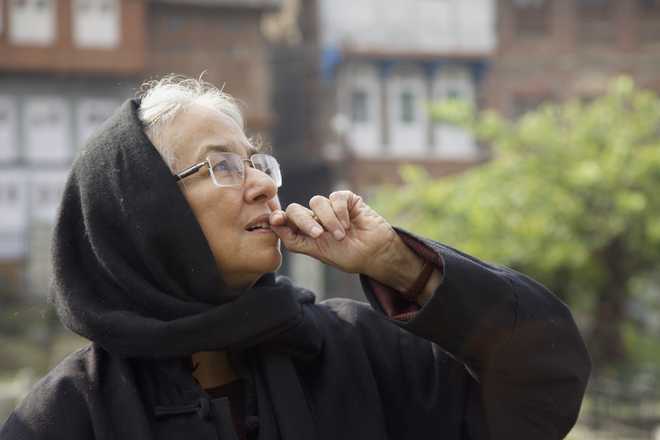
Nilima Sheikh
DIPANKAR SARKAR
Avijit Mukul Kishore’s documentary The Garden of Forgotten Snow (2018) is the filmmakers’ attempt to understand the world of beauty and politics through works of Indian painter Nilima Sheikh. The film has recently won the ‘Cinema Experimenta’ award at Signs Festival, Trichur. Excerpts from the interview
What does the title of the documentary mean?
AMK: I felt that the film needed a title that would evoke an image. Nilima’s work on Kashmir includes beautiful images of the landscape. The film needed to mirror those; the garden and the snow in the title thus do justice.
The narrative pattern of your film follows Nilima Sheikh’s art and her engagement with Kashmir over several decades. Comment.
AMK: The front face of her scrolls in her show Each Night Put Kashmir in Your Dreams (2010) is made up of images and some text, while the backdrop is largely all text, from the sources spread across several centuries. The film uses her work along with images of Kashmir and some text that is used as a voice-over by Sohaila Kapur. Nilima’s family visited Kashmir in holidays when she was a child. Her mother’s 8mm film recordings of those travels, along with my travels to Kashmir in 2011 and 2014, give shape to the video of the film, along with extensive documentation of Nilima’s installations.
The documentary steers away from making political commentary regarding the unrest in Kashmir. Why is it so?
AMK: In the last five decades or so, Kashmir has been represented in the mainstream through the binary of ‘paradise on earth’ and armed conflict. Both narratives are images of a distant ‘other’, removed from mainland India. Both are reductive in ways that cloud other representations told across centuries. The film follows Nilima’s work in context with state’s literature and art history. The voice-over text of the film includes the writings of the medieval poet Lal Ded (I, Lalla) and colonial writer Walter R. Lawrence (The Valley of Kashmir), as well as contemporary ones, like Agha Shahid Ali (Country Without a Post-Office) and Salman Rushdie (Shalimar the Clown).
Added to this is a layer of cinematography and sound, both of which find beauty in everyday life of Kashmir, while there is no getting away from the undercurrent of strife. The film deliberately stays away from the images often repeated in the media — of military presence and barbed wire.
You used off-screen narrations at a certain point for the structuring of the film. Which texts did you opt for and why?
AMK: The texts are a representative selection of writings on Kashmir from the ones that Nilima quotes on the back of her scrolls. All the texts carry different philosophical tones and meanings, reflecting the multiple realities of Kashmir.
Can you share the development process of your documentaries?
AMK: The process is sometimes accidental and at times well thought out. But what stays a constant is familiarity with people featured in the film, and an active engagement with the ideas.



























